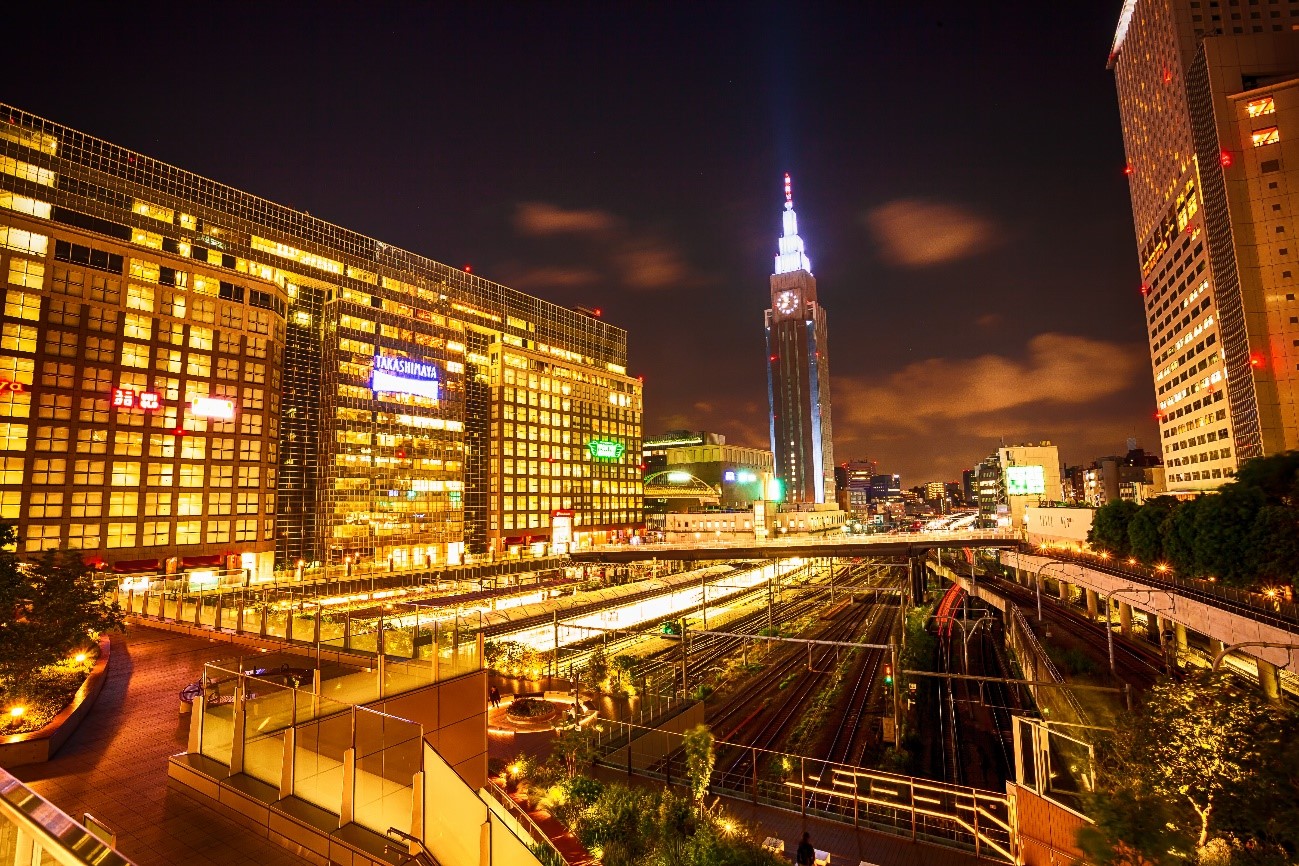Discover Shinjuku Gyoen: Tokyo’s Breathtaking Historical Garden
Shinjuku Gyoen, located in the heart of Tokyo’s Shinjuku Ward, is a vast national garden spanning approximately 58.3 hectares with a perimeter of around 3.5 kilometers. It is renowned as an urban oasis that blends three distinct garden styles: Japanese Garden, French Formal Garden, and English Landscape Garden.

A historic site featuring stunning seasonal scenery, traditional architecture, and cultural events, Shinjuku Gyoen is a favorite among both tourists and locals. In this article, we will delve into the garden’s overview, history, and must-see attractions.
Shinjuku Gyoen - A National Park
Shinjuku Gyoen, a national garden in Tokyo, is a remarkable blend of history and natural beauty. The area originally belonged to the Naito family, feudal lords of the Takato Domain, during the Edo period. In the Meiji era, the land was transformed into the Naito Shinjuku Experimental Farm, later evolving into Shinjuku Botanical Garden under imperial management. By 1906, it officially became a royal garden, and after World War II, it was reopened to the public in 1949 as a national park.
Must-See Attractions in Shinjuku Gyoen

Japanese Garden: A Tranquil Escape
The Japanese Garden is a traditional strolling pond garden (Chisen-kaiyushiki) centered around Tamao Pond. Visitors can admire:
- Seasonal beauty: Cherry blossoms in spring, lush greenery in summer, vibrant maple leaves in autumn, and serene snow-covered landscapes in winter.
- Former Imperial Pavilion: Built in 1927 to commemorate Emperor Showa’s wedding, this Chinese-style structure adds an exotic touch.
_-_%E3%83%95%E3%83%A9%E3%83%B3%E3%82%B9%E5%BC%8F%E6%95%B4%E5%BD%A2%E5%BA%AD%E5%9C%92%2C_%E6%96%B0%E5%AE%BF%E5%BE%A1%E8%8B%91_-_panoramio.jpg)
French Formal Garden: A European Touch in Tokyo
Located on the eastern side, this meticulously landscaped area features:
- Symmetrical flower beds with over 500 varieties of roses.
- Platanus tree-lined avenues, creating a picturesque autumn scene.

English Landscape Garden: A Relaxing Open Space
With its expansive grassy lawns, the English Landscape Garden offers a perfect spot for:
- Picnics and leisure activities
- The iconic Tulip Tree, standing at 35 meters tall, symbolizing the park’s timeless beauty.
Great Greenhouse: A Tropical Paradise
This impressive dome-shaped greenhouse houses:
- Rare and endangered tropical plant species
- A spectacular orchid and fern collection, providing a year-round floral showcase.

Former Imperial Rest House: A Cultural Treasure
Built in 1896, this Western-style wooden villa was once used by the imperial family. It remains the only surviving Meiji and Taisho-era imperial structure in Shinjuku Gyoen.
The History of Shinjuku Gyoen
Edo Period (1590–1868): The Birth of Naito Estate
The origins of Shinjuku Gyoen date back to 1590, when Tokugawa Ieyasu, Japan’s first shogun, granted the land to his loyal retainer Naito Kiyonari. The Naito clan established a vast daimyo residence, utilizing the estate throughout the Edo period. A legendary tale suggests that Naito Kiyonari galloped his horse to mark the territory's boundaries, securing an expansive domain.

Meiji Era (1872–1906): Agricultural Experimentation
Following the Meiji Restoration, the site became Naito Shinjuku Experimental Farm in 1872, aimed at modernizing Japan’s agriculture. Managed by the Imperial Household Agency, it played a crucial role in cultivating crops, silk production, and botanical research. In 1879, it was renamed Shinjuku Botanical Garden, expanding its role in floriculture and forestry.

Imperial Garden Era (1906–1945): A Royal Retreat
In 1906, Shinjuku Botanical Garden was transformed into Shinjuku Gyoen, a royal garden under the influence of French landscape architect Henri Martinet. This redesign combined European-style landscaping with Japanese aesthetics, thanks to the vision of Itto Fukuba, the garden’s chief horticulturist. Fukuba gained global recognition for his expertise, notably presenting large-scale chrysanthemum arrangements at the Paris World Expo. Shinjuku Gyoen hosted imperial ceremonies, foreign dignitaries, and victory celebrations. It became a prestigious location for state events, particularly following the Russo-Japanese War victory in 1905.
Post-War Reconstruction and Public Opening (1945–Present)
During World War II, Shinjuku Gyoen suffered significant damage in the 1945 Tokyo Air Raids. However, in 1949, the garden was rebuilt and reopened to the public as Shinjuku Gyoen National Garden.
Key milestones in its modern history include:
- 1952: Hosting Japan’s first National War Memorial Service.
- 2012: The grand reopening of the Great Greenhouse, a cutting-edge facility for plant conservation.
Today, Shinjuku Gyoen remains a beloved retreat for nature lovers and cultural enthusiasts.

Seasonal Events and Attractions
Throughout the year, Shinjuku Gyoen hosts various events that draw thousands of visitors:
- Cherry Blossom Viewing (Spring): With over 1,000 cherry trees of 65 varieties, this event attracts crowds from late March to April.
- Chrysanthemum Festival (Autumn): A historic event displaying meticulously arranged chrysanthemums, a flower closely associated with the Japanese imperial family.

Shinjuku Gyoen is a timeless sanctuary in the bustling metropolis of Tokyo. Whether you’re admiring cherry blossoms, exploring historic buildings, or relaxing in its serene gardens, this park offers a unique cultural and natural experience.
A perfect blend of history, art, and horticulture, Shinjuku Gyoen invites you to step into a world of tranquility and beauty—right in the heart of Japan’s busiest city.
International Hostess Bar Since 1993
夢
ORIGIN
・ International Hostess Bar since 1993
・ Japanese Hospitality with International Service
・ Diverse and Charming Floor Ladies
・Located in Shinjuku, Tokyo
・Transparent Pricing
・Easy Online Reservations

-Aug-03-2024-02-44-14-8188-AM.webp)







.jpg)





